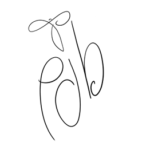Turn into a Wonderful Nature Journaling Rabbit Hole!

Quin gold, new gamboge, hansa yellow, raw and burnt siennas, quin rose, ultra marine blue, a dash of pyrrol scarlet… Yum!
Palette’s are by Art-Toolkit.
Here in the lowcountry of South Carolina, our fall colors are sprinkled within the landscape. Being a New Englander for my first 30 years of life, when we moved here, I wasn’t used to the the gentle shifts between the seasons along the southern coast, nor that they each linger for three full months.

How does an Urban Sketching outing turn into Nature Journaling Rabbit Hole?
Our local Urban Sketching Chapter was at Jarvis Creek Park on Hilton Head for our November sketch meet. There were lots of urban scenes to sketch, but I was drawn to the splash of red in a small grouping of trees along the edge of the pond.

Meanwhile
I had a scene that was itching to get put into my journal.
I was so delighted in finding the splash of color, the decision was made to sketch directly with watercolor. This is a happy, spontaneous way to paint and one of my favorite ways to do so.
First the leaves of small grouping of trees on the left were dropped in. Then base colors for the pine tree, being careful to leave the white of the paper for the poison ivy vine running up the tree and the slant of the spiny-barked, kind of a mystery tree. I wasn’t quite sure how I would approach the texture, so saved it to last. All the while a few anhingas were filling the air with their croaks and nasal grunts. Big smile!
There was a tree that was familiar to me from my Master Naturalist studies back in 2010. I haven’t seen this specimen in quite a few years, and didn’t quite trust my initial ID of ‘toothache-tree’. Try as I might, I couldn’t get the ‘Seek’ app to give me any other information other that it was a Dicot. Sigh….
Finally. after many images of the bark at all kinds of angles, the app declared it was ‘hercules club’ ~ that name rang no bells. I was itching to get back into my studio and dig into treasured field guides.


After sorting through the mark making tools in my field kit, I decided to dip the tip of a Derwent Dark Wash 8B water soluble graphite pencil in water and sketch the most prominent texture. I like this pencil for a few reasons: the mark it leaves on paper is malleable whether drawn with a dry or wet lead, the 8B gives lots of pigment to the paper, and once dry is erasable!
A rigger brush was used to put in the trunks and limbs of the left trees and I drew more with this brush on the textured tree. It was time to go home, do some research and add lettering to finish off this delightful plein air sketching experience.

Happy Dance!
Off to the studio I went to scour through tree field guides. I’m very happy to say that my initial ID was correct! Yay, brain!
While it’s nice to get a specimen ID in the field, the learning journey is sooooo much richer thumbing through field guides. I do believe it also helps you retain the information better. The meditative process of thumbing through a field guide suited to the area of the country you are in, checking the range maps, looking at images, reading information… It’s all about the journey ~ every which way in life!
Meet the Tooth-ache Tree
Latin name: Zanthoxylum clava-herculis Linnaeus (always good to note on your journal pages as common names in one area are not always used in another.
If you chew on a twig of this tree, it will numb your mouth. Early settlers would use it to calm down toothaches. Bet they learned this goody from Native Americans. The ingredient is the alkaloid xantholin, The leaves have a citrus odor when crushed. Small flowers (unisexual [some with stamens only, some with pistils only]) appear in the early spring and mature to reddish-brown fruit in early summer. In the lowcoountry, the toothache-tree can be found on sand dunes, in maritime forests and along streams, ponds or rivers.
More phone apps that may help with your field ID:
I have since learned that ‘PlantNet’ and ‘iNaturalist’ can be more dependable when taking photos in the field. Also suggested is doing a reverse google search of your image – haven’t explored this option as yet. One tech thing at a time!
I urge you to take the beautiful rabbit hole journey within field guides. It’s a lovely trip!




Thank you Pam!
Always inspirational.
So good to hear from you, Beth! Holiday blessings to you dear friend!